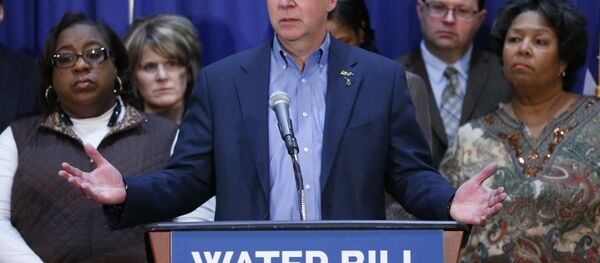A new AP-GfK poll found that a majority of Americans answering the survey believe that the lead poisoning crisis in Flint is indicative of a much larger problem, and lower income Americans and minorities are more likely to worry about their water being contaminated.
The poll found that 54% of white Americans are very confident that their tap water is safe, while only 40% of African-Americans and 28% of Hispanics share their confidence. Additionally, 60% of people living in households with an income of $100,000 a year and higher are confident in their water supply, but less than 40% of people making less than $50,000 a year have the same confidence.
Overall, just under half of Americans reported that they are extremely or very confident in the safety of the tap water in their home, while a third are moderately confident, and 18% are not confident at all.
Only one third of Americans reportedly drink the tap water from their homes, while the remainder rely on bottled or filtered water.
Half of those polled believe that the federal government should be more involved with ensuring safe drinking water, while 40% believe its level of involvement is about right and 7% think it should be doing less. This is also divided among race, as 69% of black Americans and 62% of Hispanics want more federal government involvement in safe water, while only 44% of white Americans agree.
The issue is also divided among political parties, as 66% of Democrats and 50% of independents want to see more federal oversight. On the other hand, only 33% of Republicans want the federal government to be doing more to ensure residents have safe water.
In October, the state changed the city’s drinking water source back from the polluted Flint River to the Detroit water system, but warned that the water is still not safe. Michigan Governor Rick Snyder has resisted growing calls for his resignation over the scandal.
The effects of lead-poisoning cannot be reversed. Researchers at nearby Hurley Children’s Hospital have identified a "rise in blood lead levels of children less than 5 years old" who live in the area.




